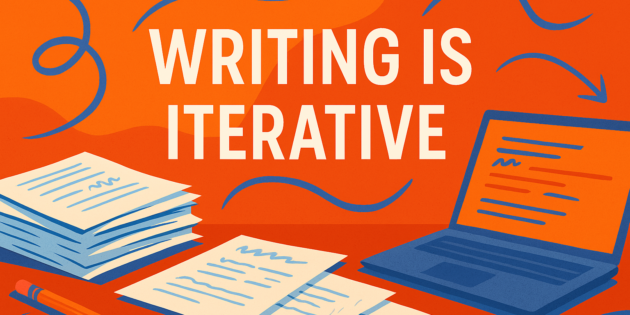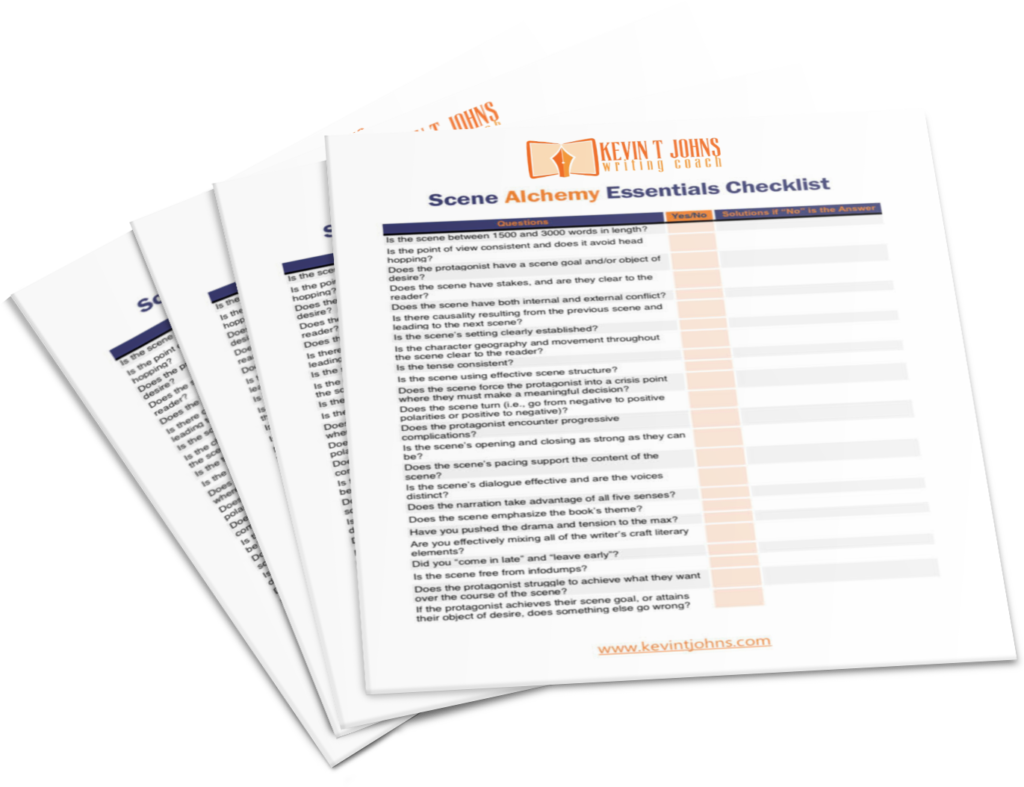As a writing coach, here’s something I say to my clients all the time (and if you’ve worked with me, you’ve probably heard me say it too): writing is iterative.
It’s not linear. It’s not one-and-done. And no matter how much we wish we could nail the perfect novel on our first try… we can’t.
No one can.
Of course, every time I say this, I see the same reaction.
Writers nod politely, their faces saying, “Yeah, totally, I get it.”
But their eyes? Their eyes are screaming, “Not me. I’m different. I’m going to get it right the first time.”
Spoiler alert: you won’t.
And that’s okay.
In fact, that’s great.
No One—Not Even Hemingway—Gets It Right the First Time
I have the “Hemingway Library Edition” of A Farewell to Arms. Tucked in the back of the book is something amazing: all of Hemingway’s drafts of the final paragraph. He rewrote that sucker 32 times. And when asked why it took so many revisions, he simply said:
“Getting the words in the right order was really difficult.”
Think about that. One of the greatest writers of all time, revising one paragraph over and over. Not because he didn’t know what he was doing. But because even the masters have to wrestle with the work.
Draft 1 is the Hardest
When I coach writers through the novel-writing process, I often use a bar graph to explain the drafting journey.
Picture a chart where the X-axis is time and energy, and the Y-axis is drafts.
The first bar? Towering. It represents the first draft—the hardest one to write, the most emotionally draining, and the slowest to complete.
Draft two? Still tough.
But by draft three? Something magical happens. The process begins to speed up. You start knowing your story better. Your characters sharpen. The plot tightens. Each revision gets easier. Less time. Less guesswork. More confidence.
You’re not lost in the jungle anymore—you’ve got a map.
Revisions Aren’t the Enemy—They’re the Fun Part
Some writers resist revisions because they think of them as punishment for “not getting it right.” But I think revisions are the most fun part of the writing process.
With the first draft, you’re writing into the unknown. You’re feeling your way through the fog, hacking your way through a dense story-forest. But when you revise? You’ve already found the trail. You can go back and blaze it beautifully.
And guess what? You don’t need to revise in order. Want to start fixing that climactic showdown in scene 45? Go for it. Want to rewrite the dialogue throughout the book because you just took a killer course on writing dialogue? Amazing—do a dialogue sweep! That’s one of the joys of revision: the freedom to focus and improve in layers.
Real Life Isn’t School
One of the reasons so many writers cling to first-draft perfectionism is that traditional education didn’t teach us the value of revision. In school, you wrote your essay the night before, handed it in, got your grade, and moved on. The idea of writing something, then writing it again and again to make it better, wasn’t the norm.
But real writing? It’s not about cranking out a passable paper the night before it’s due. It’s about crafting something lasting—something great—through patience, play, and persistence.
How Many Drafts Will It Take?
In one of Steven Pressfield’s books (I think it was Do the Work or Turning Pro), he says that writing a book usually takes about 10 drafts.
And honestly? That feels about right.
Now, that doesn’t mean 10 full rewrites. As you progress, the changes become more focused and surgical. Maybe draft nine is the one you think is done. You send it out to beta readers… and five of them come back with the same feedback on a certain part. So draft ten is just refining that one section. That’s the power of iteration. That’s how good books become great.
Writing Into the Known
Once you’ve got a full draft under your belt, everything changes. You’ve seen the ending. You know what happens. You can finally go back and set up those brilliant payoffs. You can revisit that opening scene and plant the seeds that will bloom in act three.
You’re no longer guessing. You’re building with purpose.
Give Yourself Permission to Get Messy
Writing is messy. But it’s meant to be.
Don’t let perfectionism paralyze you. The first draft is just you telling yourself the story. The second draft is you making sense of it. And every draft after that? It’s you getting closer to brilliance.
So go easy on yourself. Trust the process. Embrace the joy of discovery.
And remember: writing is iterative.
—
Kevin T. Johns is a writing coach who believes the secret to great storytelling isn’t getting it perfect on the first try—it’s embracing the magic of revision.Get his checklist for turning ordinary scenes into literary gold:







